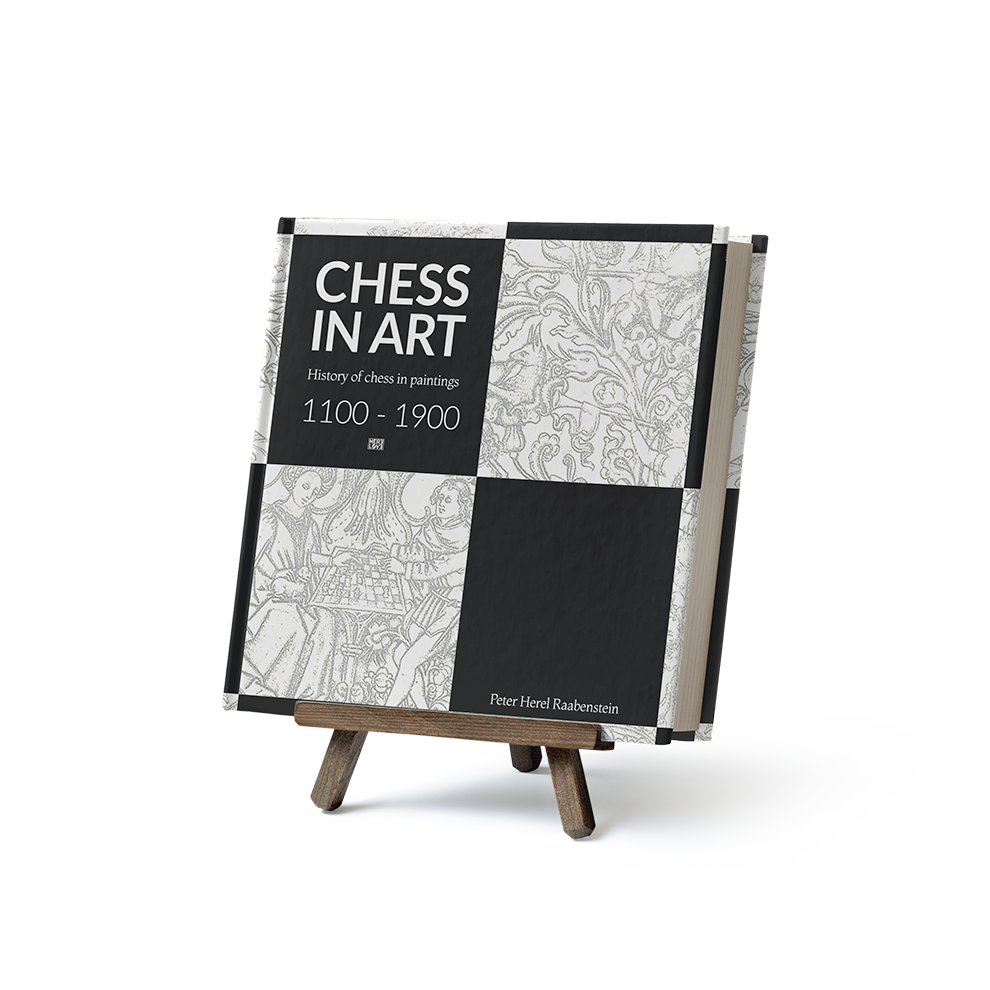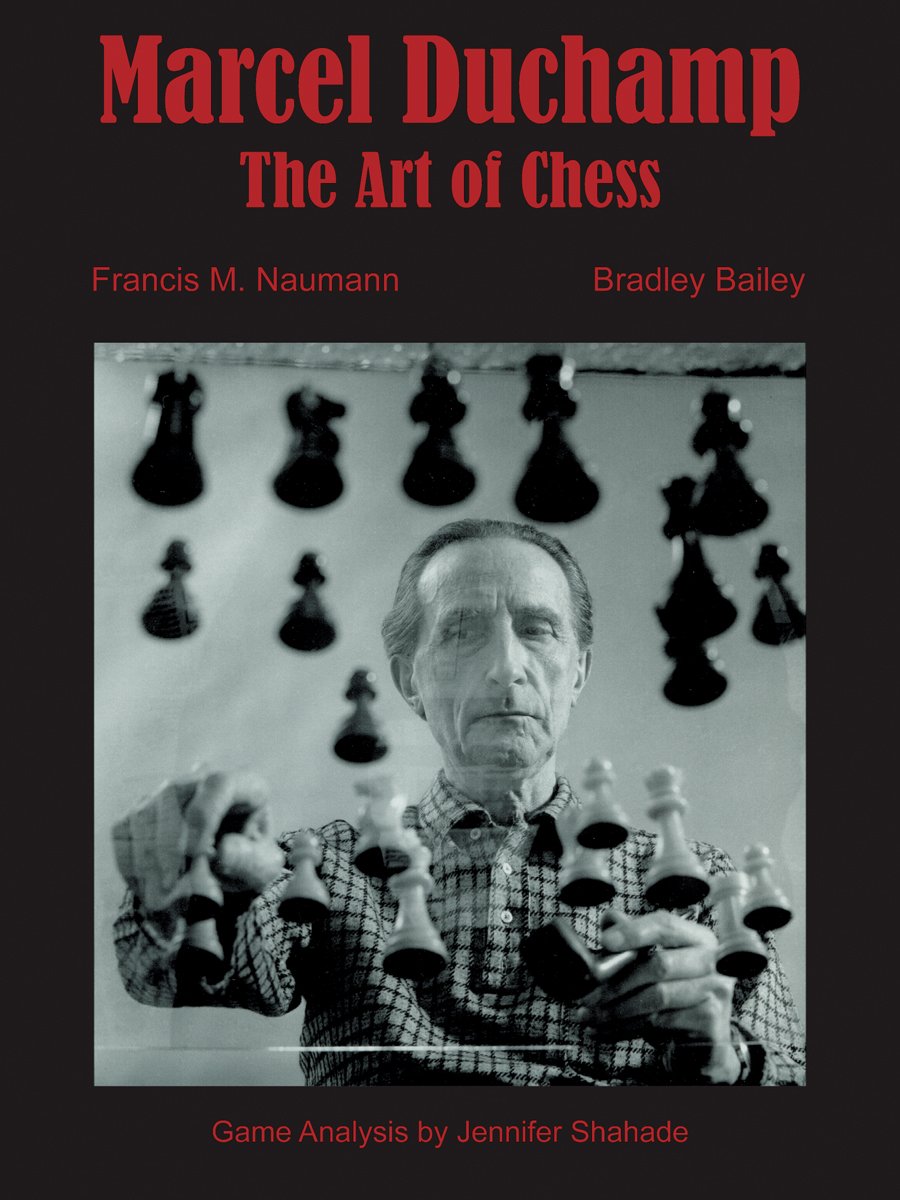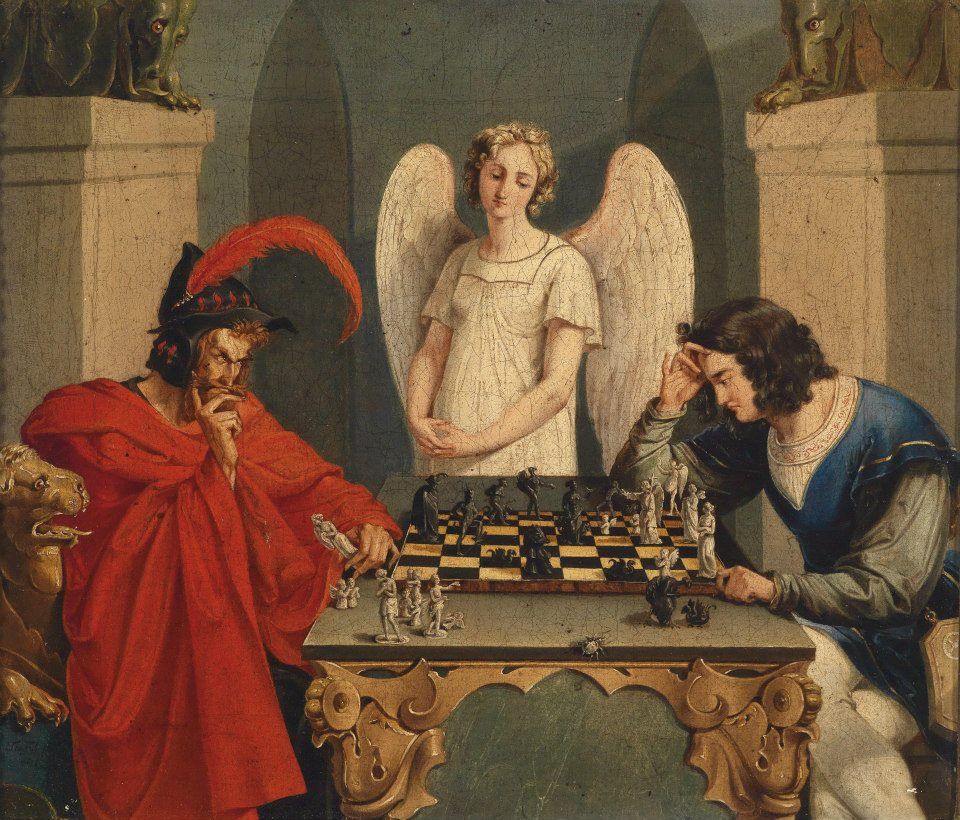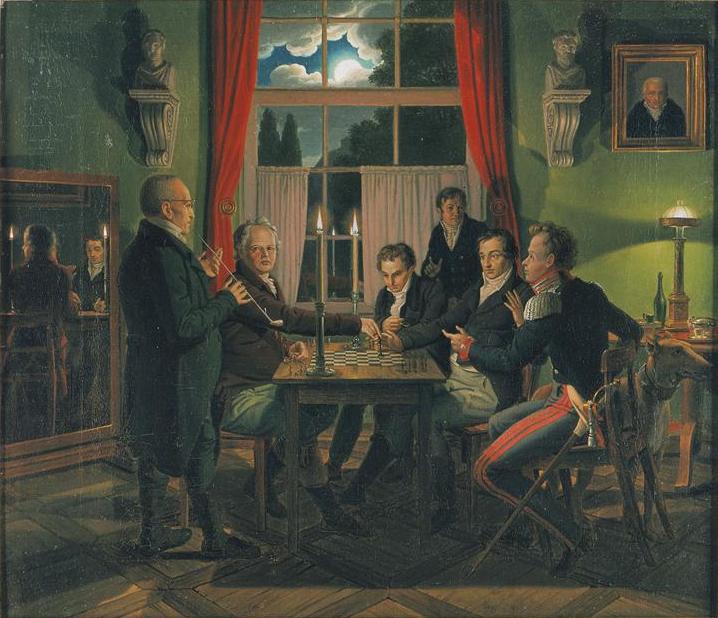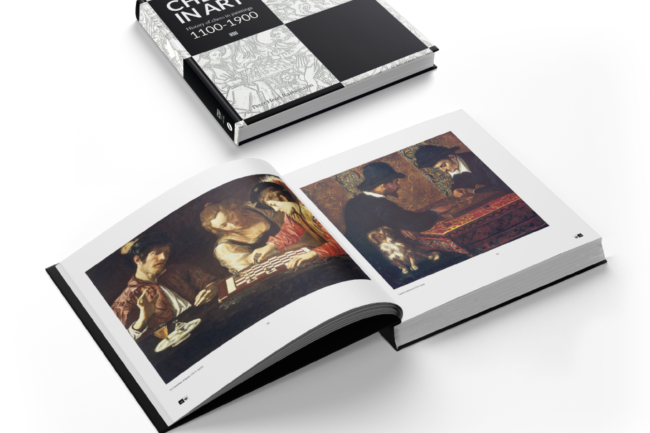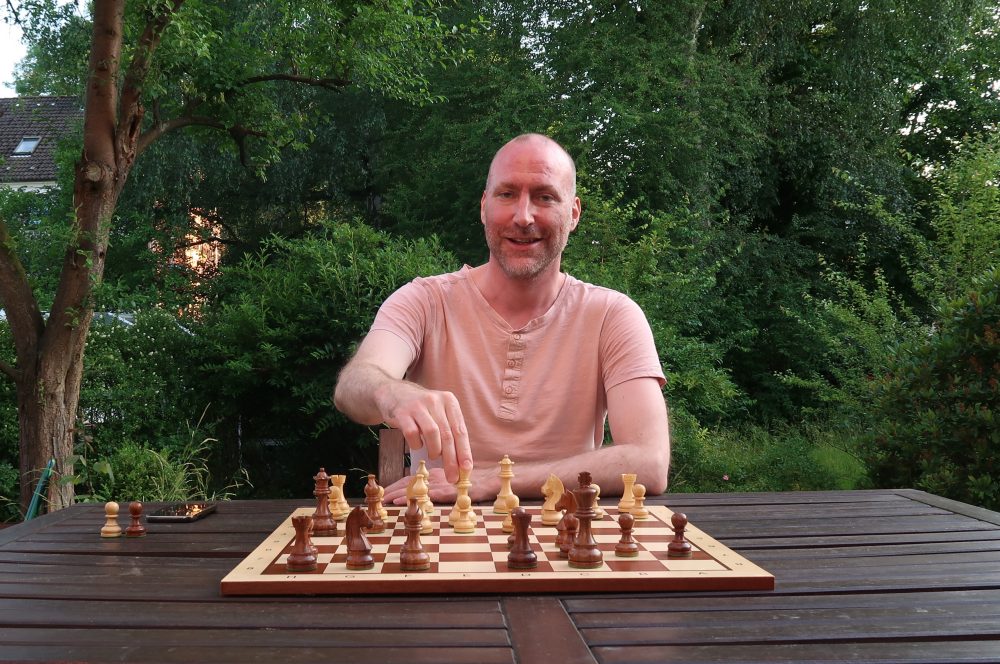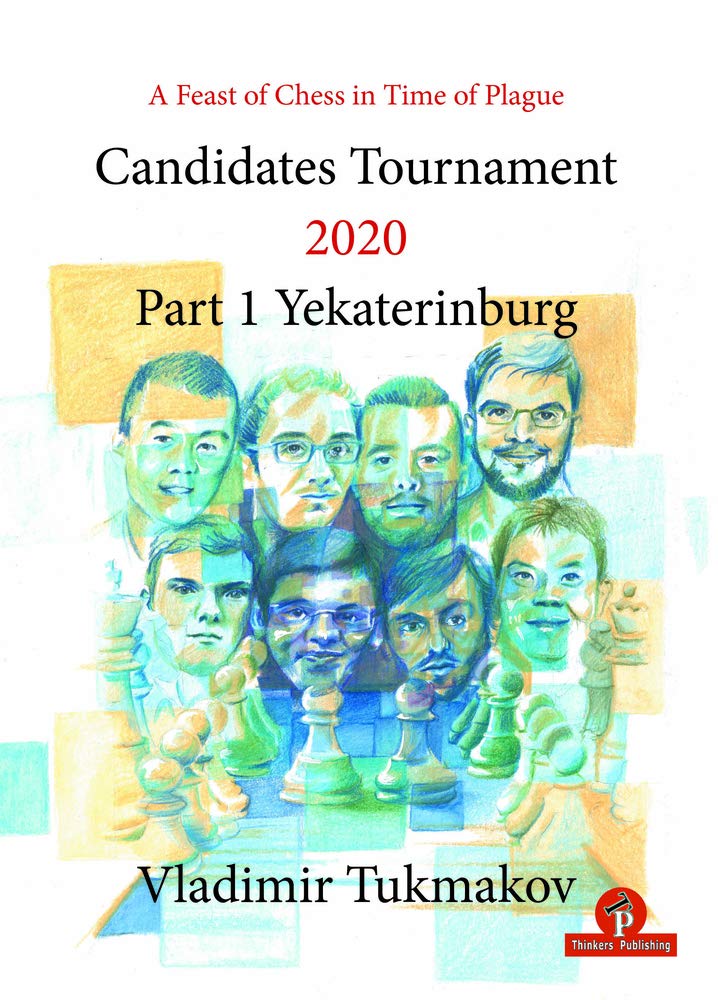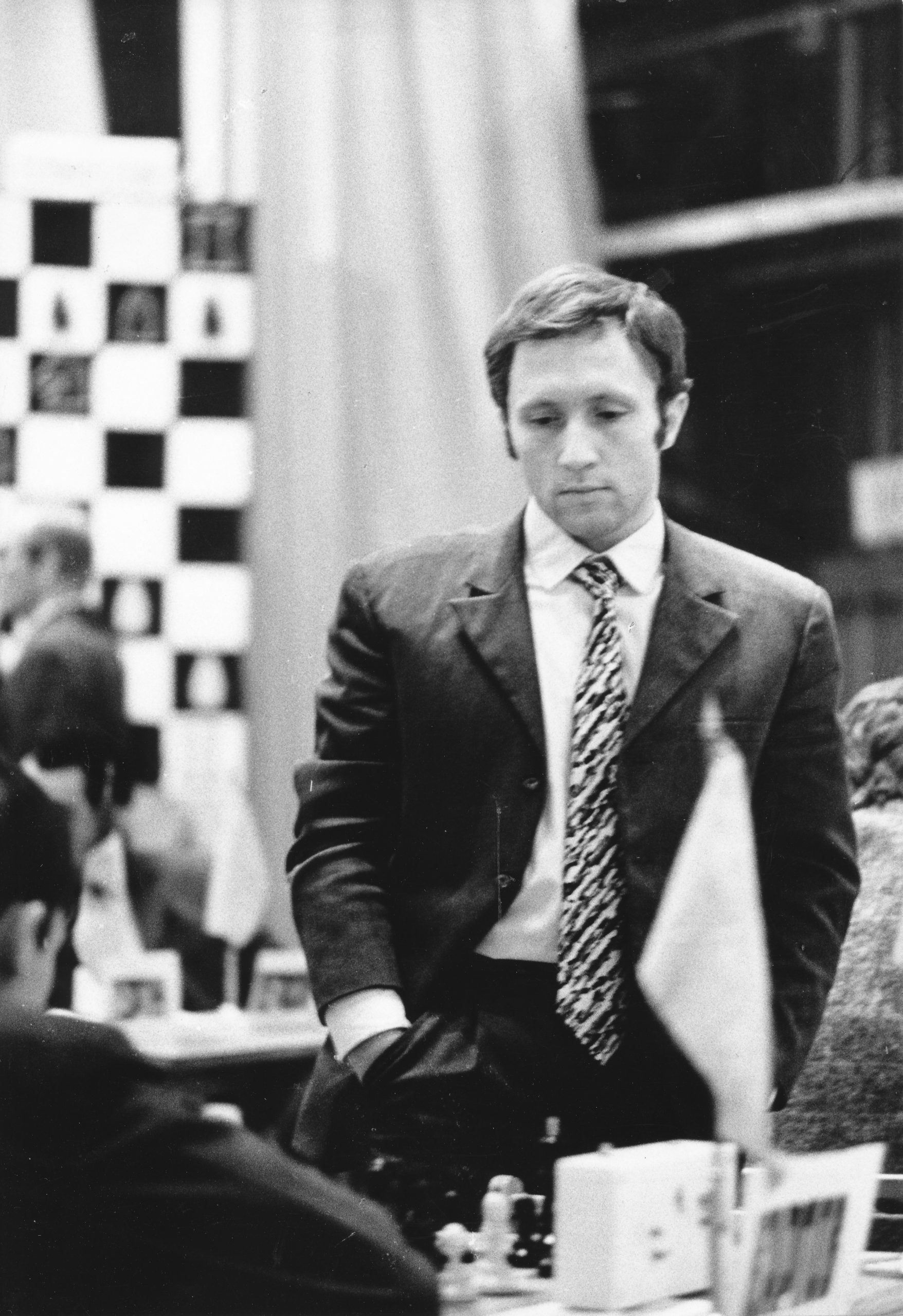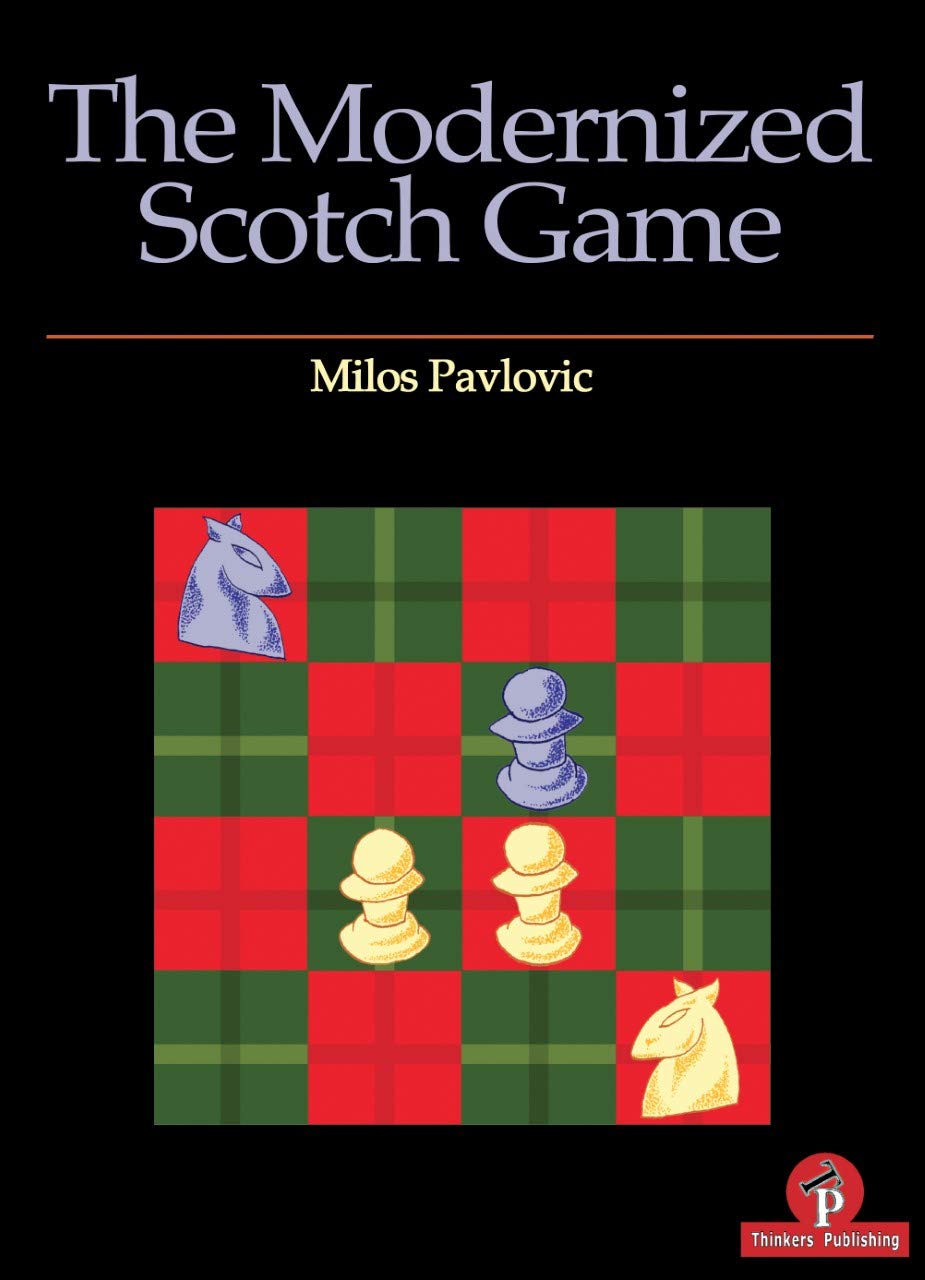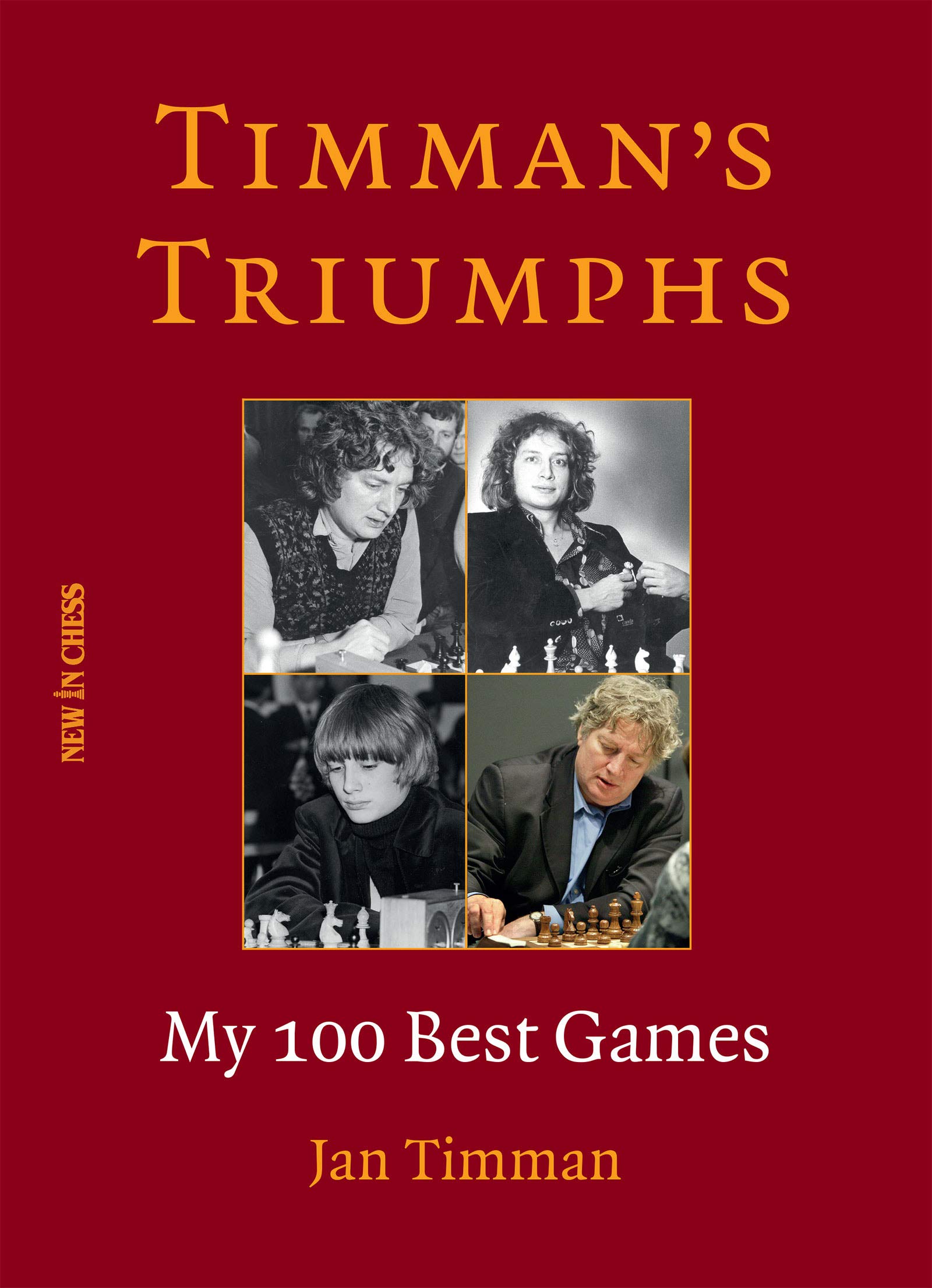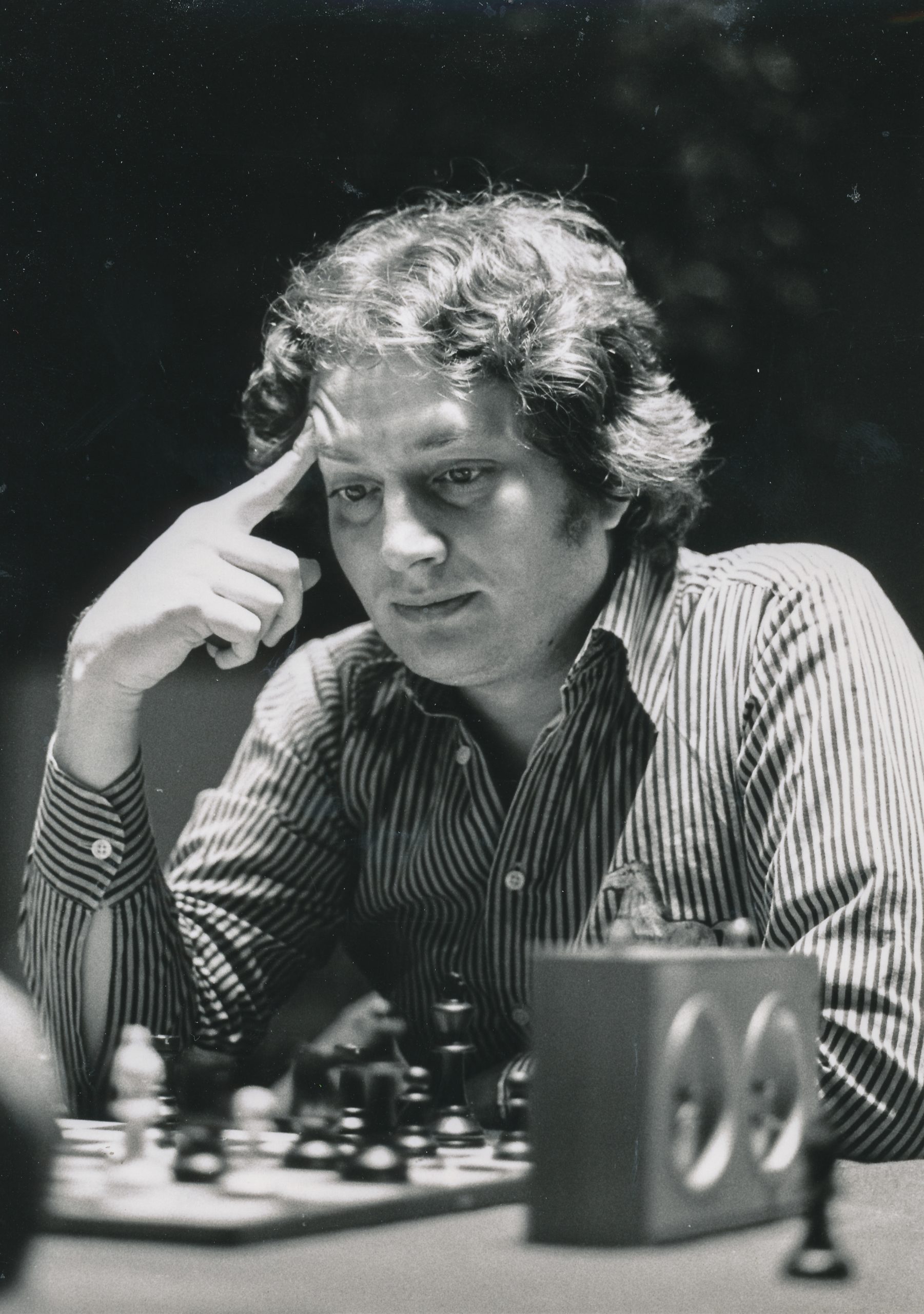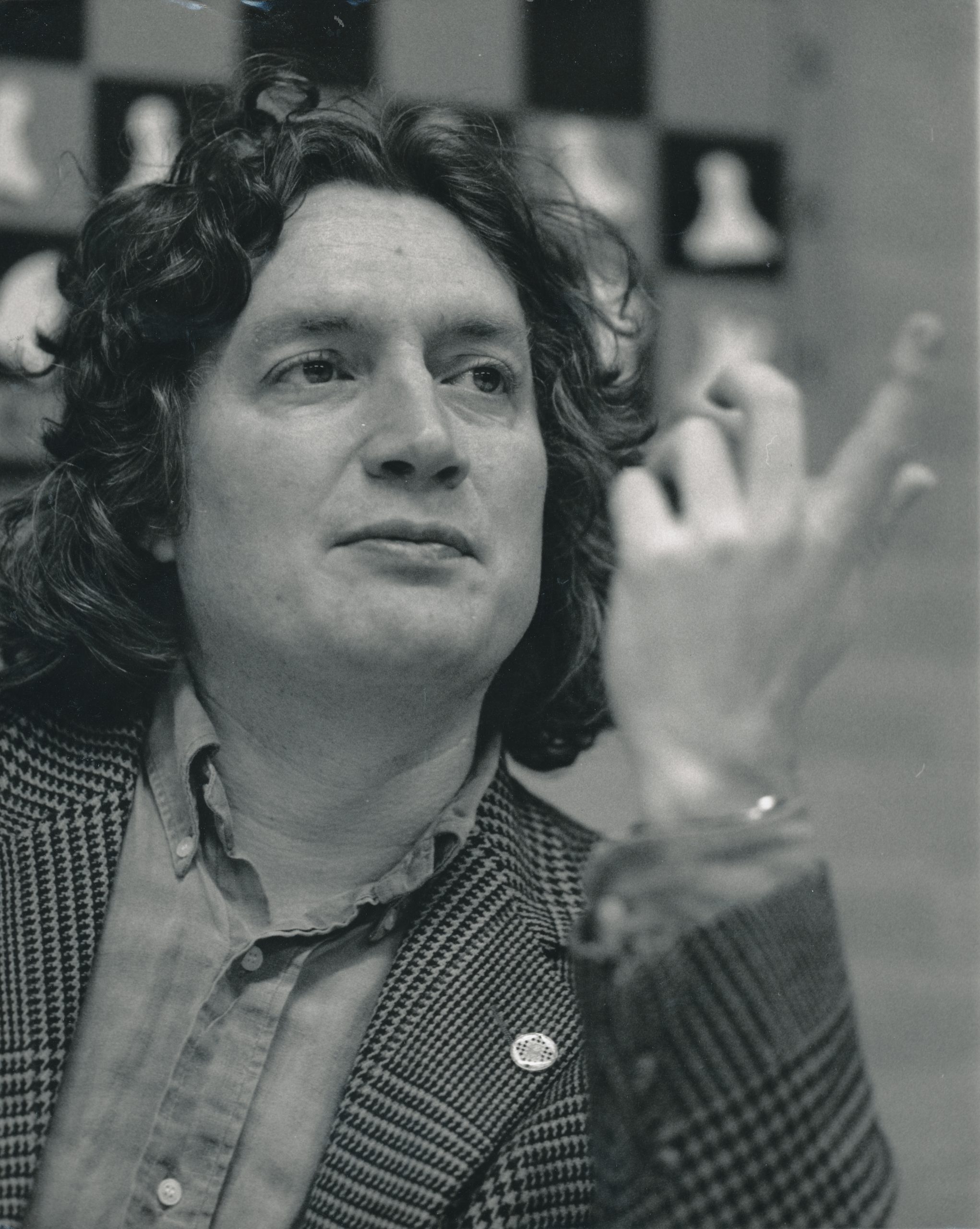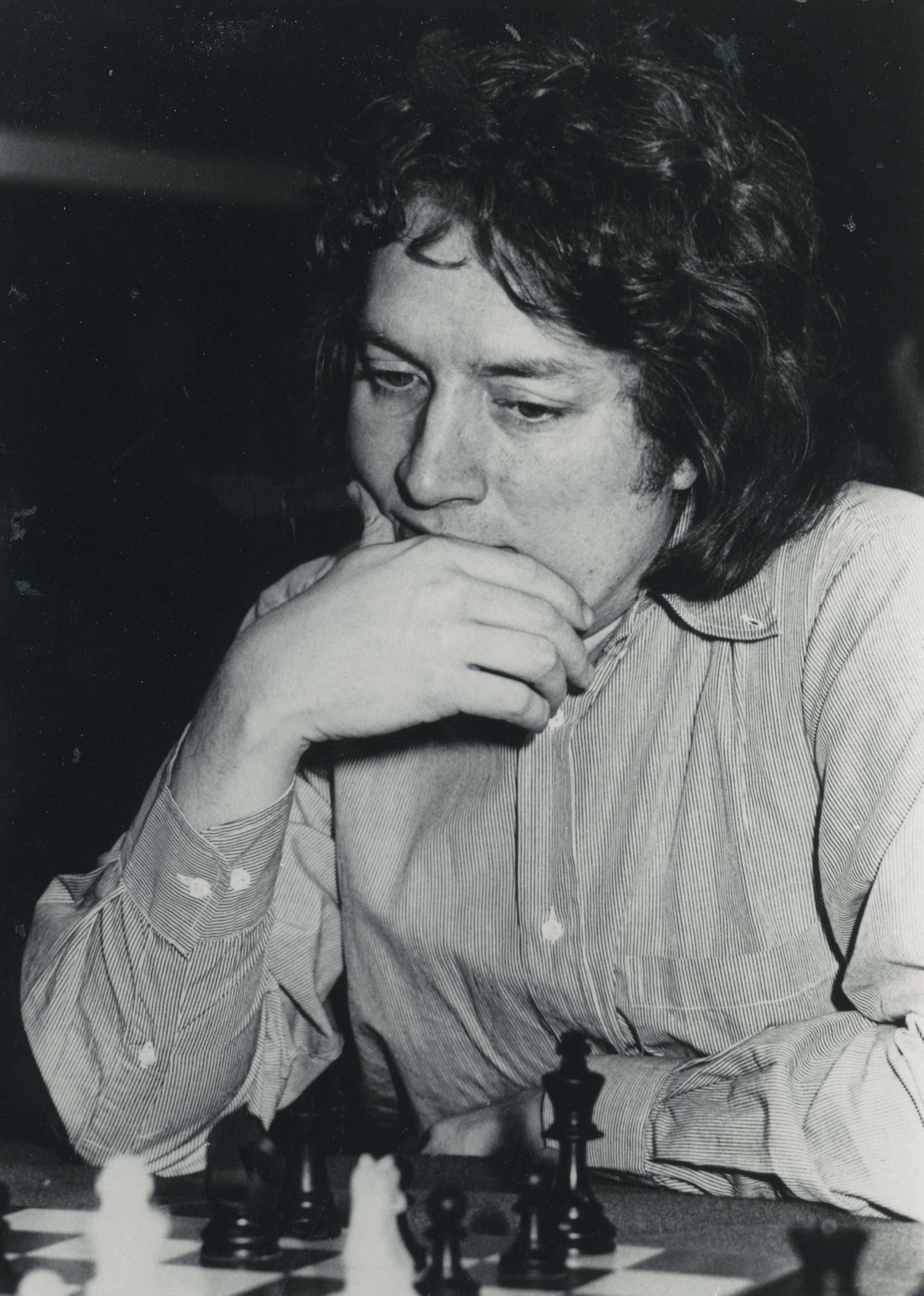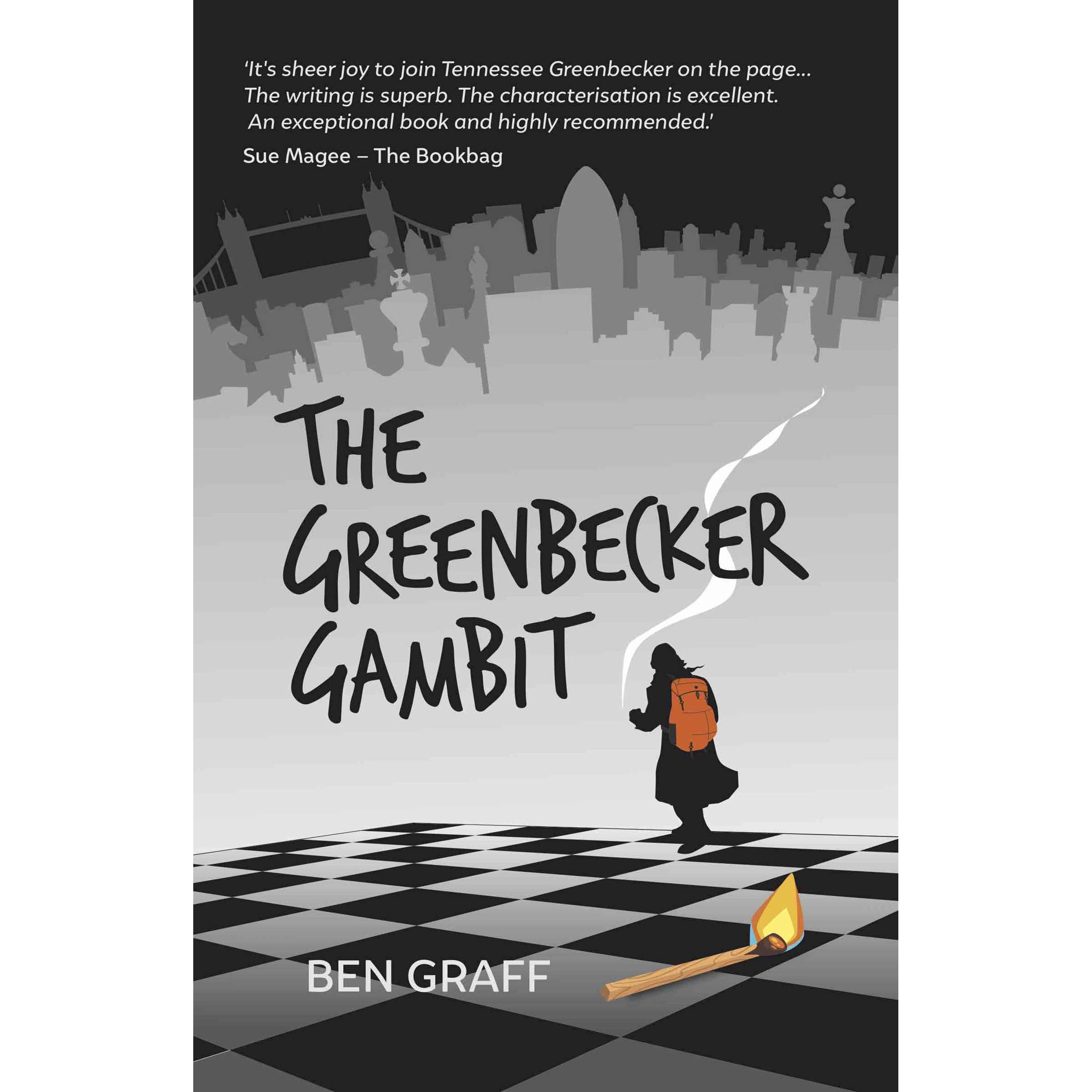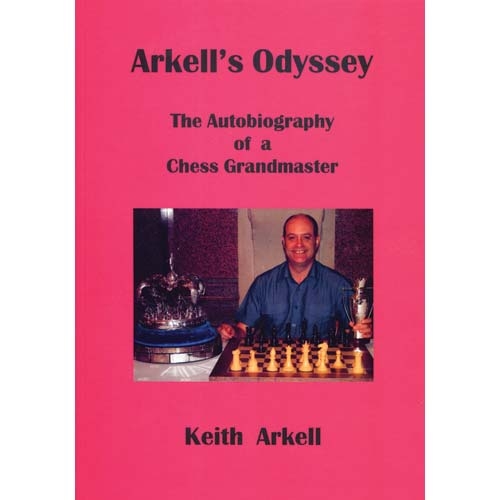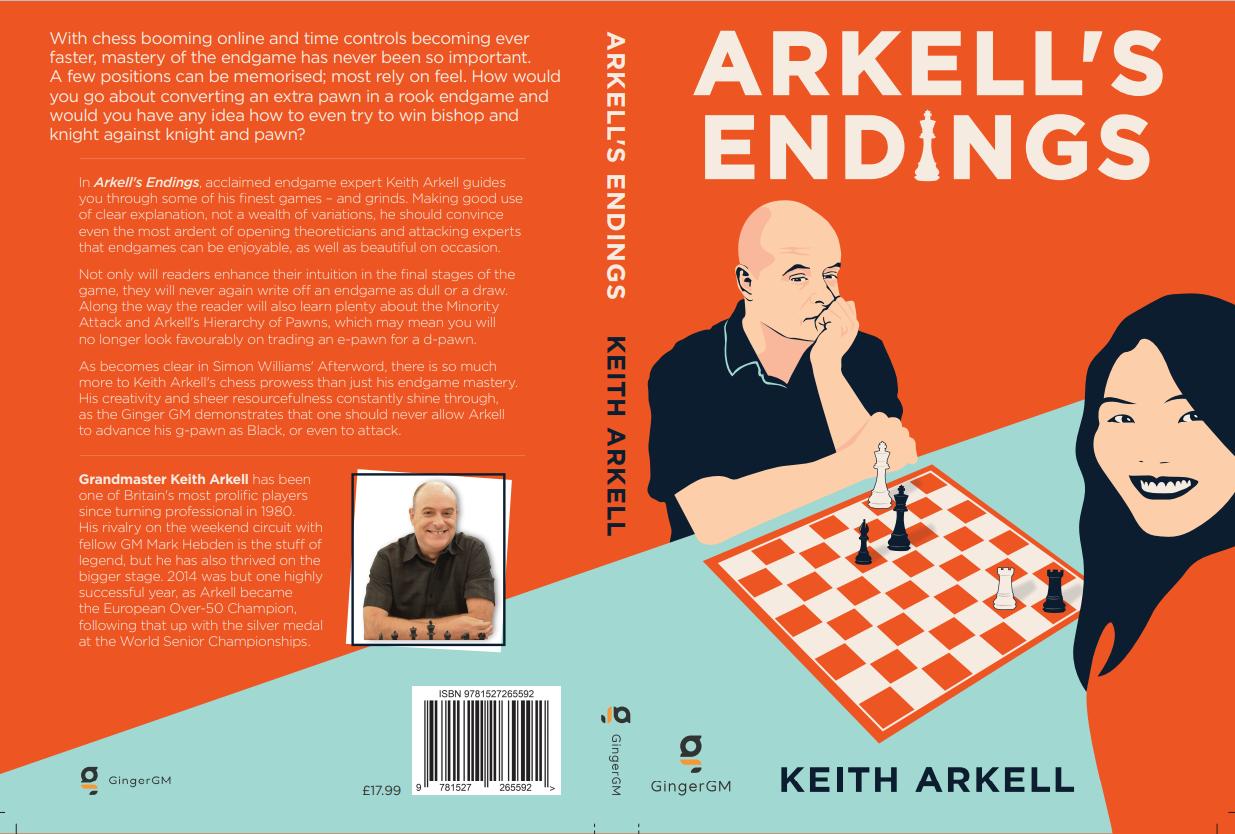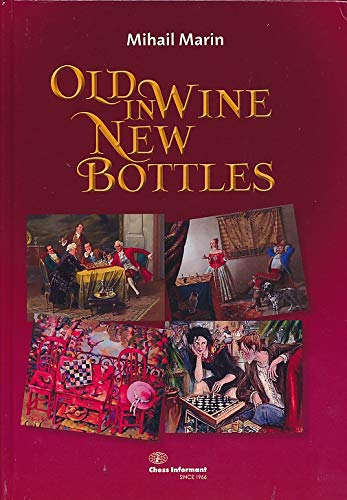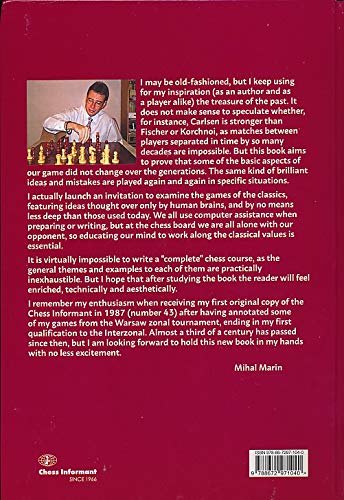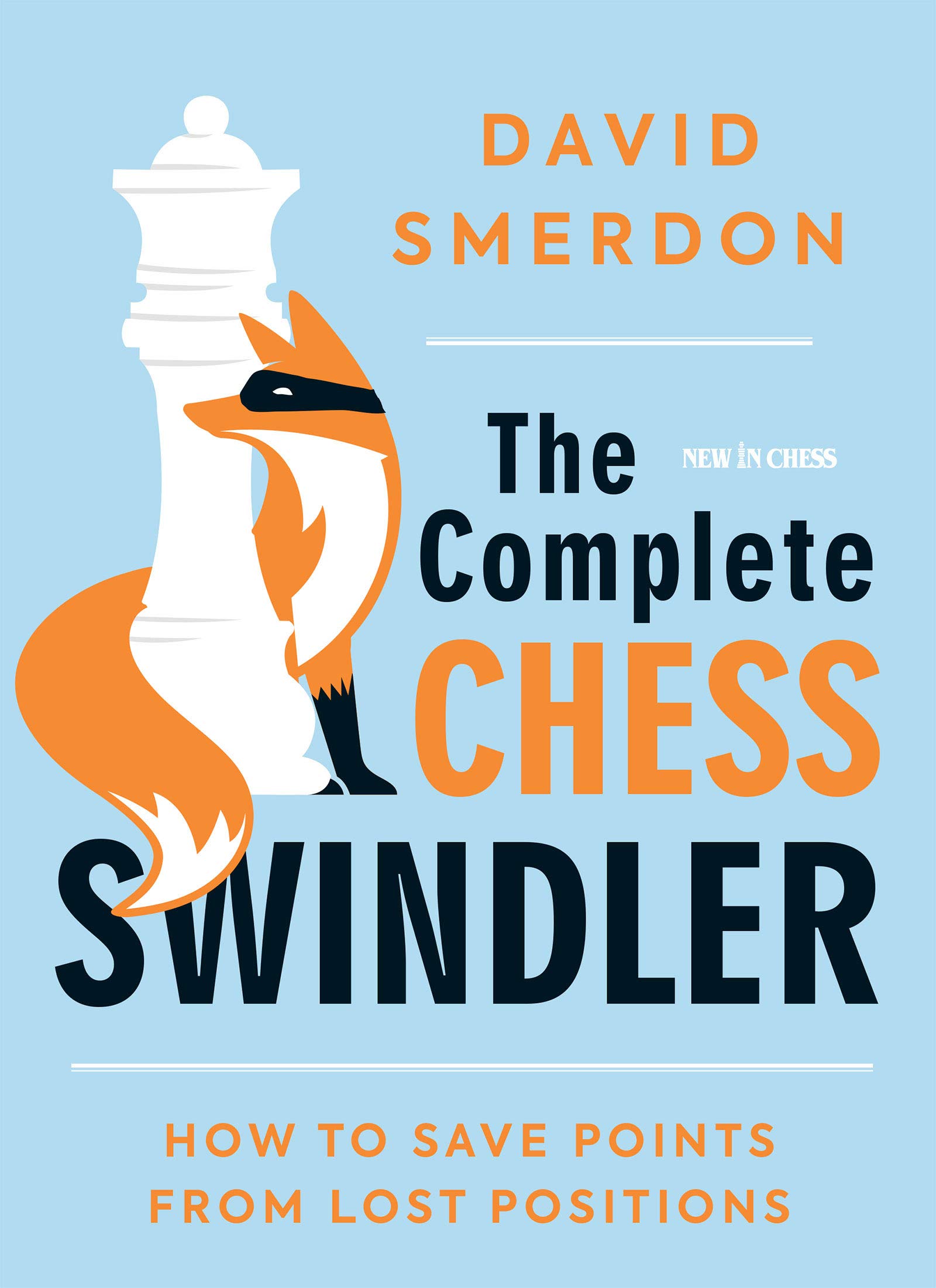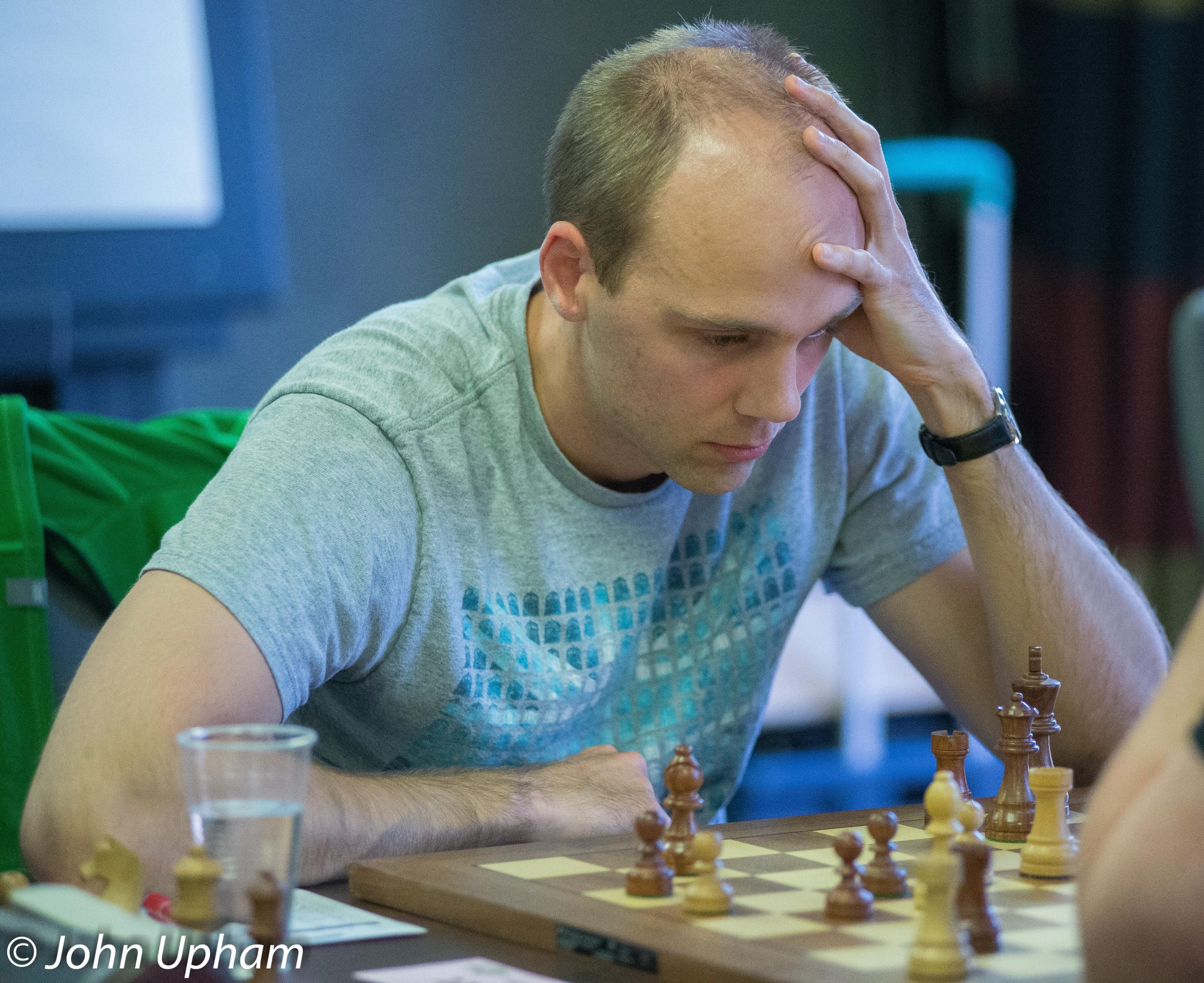Decision Making In Major Piece Endings : Boris Gelfand
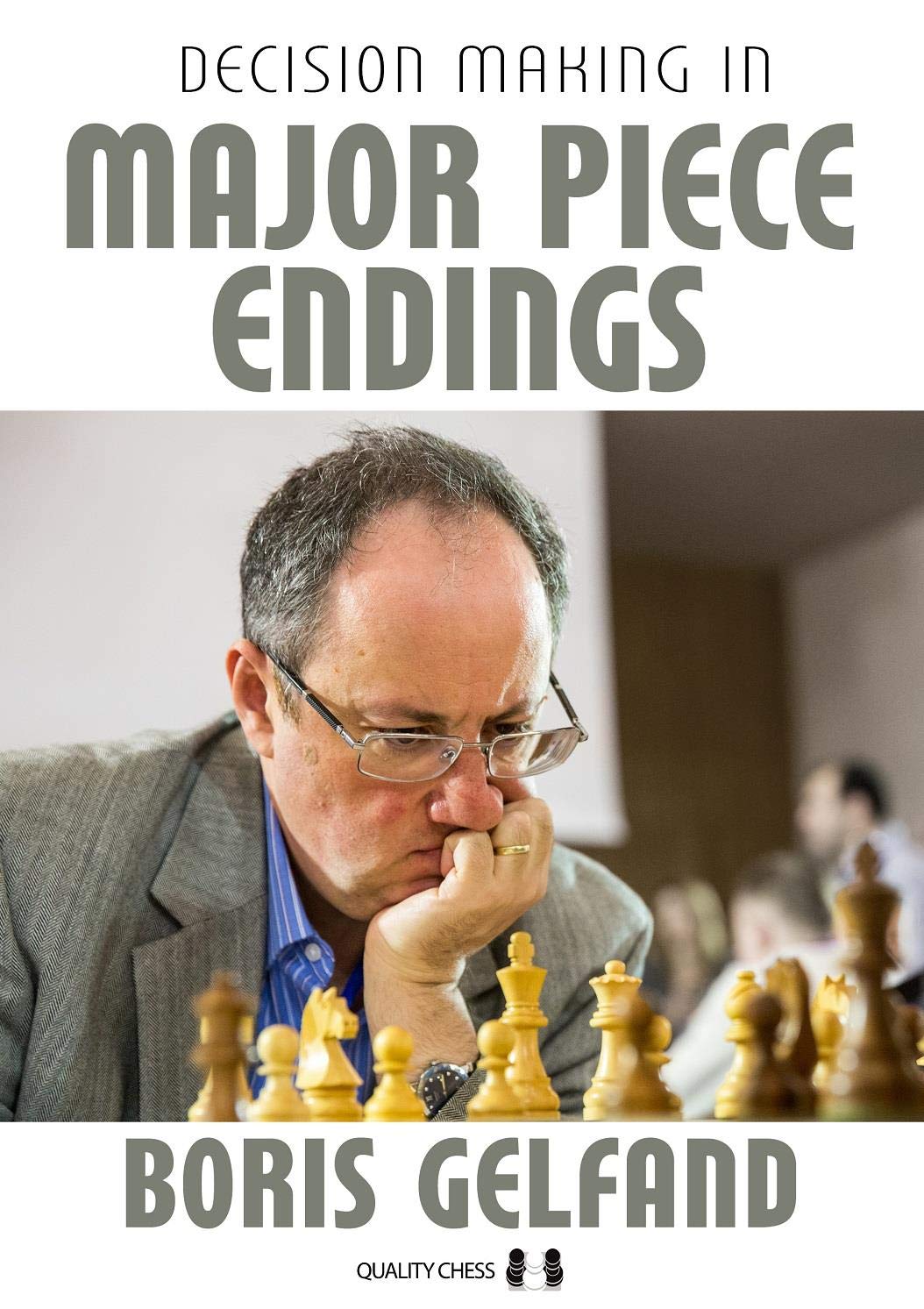
From the Publisher’s Foreword:
“This is the fourth book in the Decision Making In Chess series. It was written over the last couple of years. A lot of work has gone into this book and the accompanying volume Technical Decision Making In Chess, which deals with a wider range of technical topics, whereas this book focuses on positions without minor pieces.
It has been four years since the publication of Dynamic Decision Making in Chess and certainly there will be one person out there wondering what happened to us and why the third volume was taking so long to complete. I hope that the content alone of these two books will answer that question.”
From the back cover:
“In Decision Making in Major Piece Endings former World Championship Challenger Boris Gelfand discusses his path to decision making in endgames involving rooks or queens, as well as the neglected “4th phase”. Countless games are decided by good or bad technique in such endgames, so readers are certain to benefit from the insights of a word-class Grandmaster on this vital topic.
Grandmaster Boris Gelfand has been an elite player for over 30 years, winning the World Cup, Olympiad Gold, the Candidates and many other top tournaments. Grandmaster Jacob Aagaard is the only chess writer to have won all the major awards for chess writing. ”
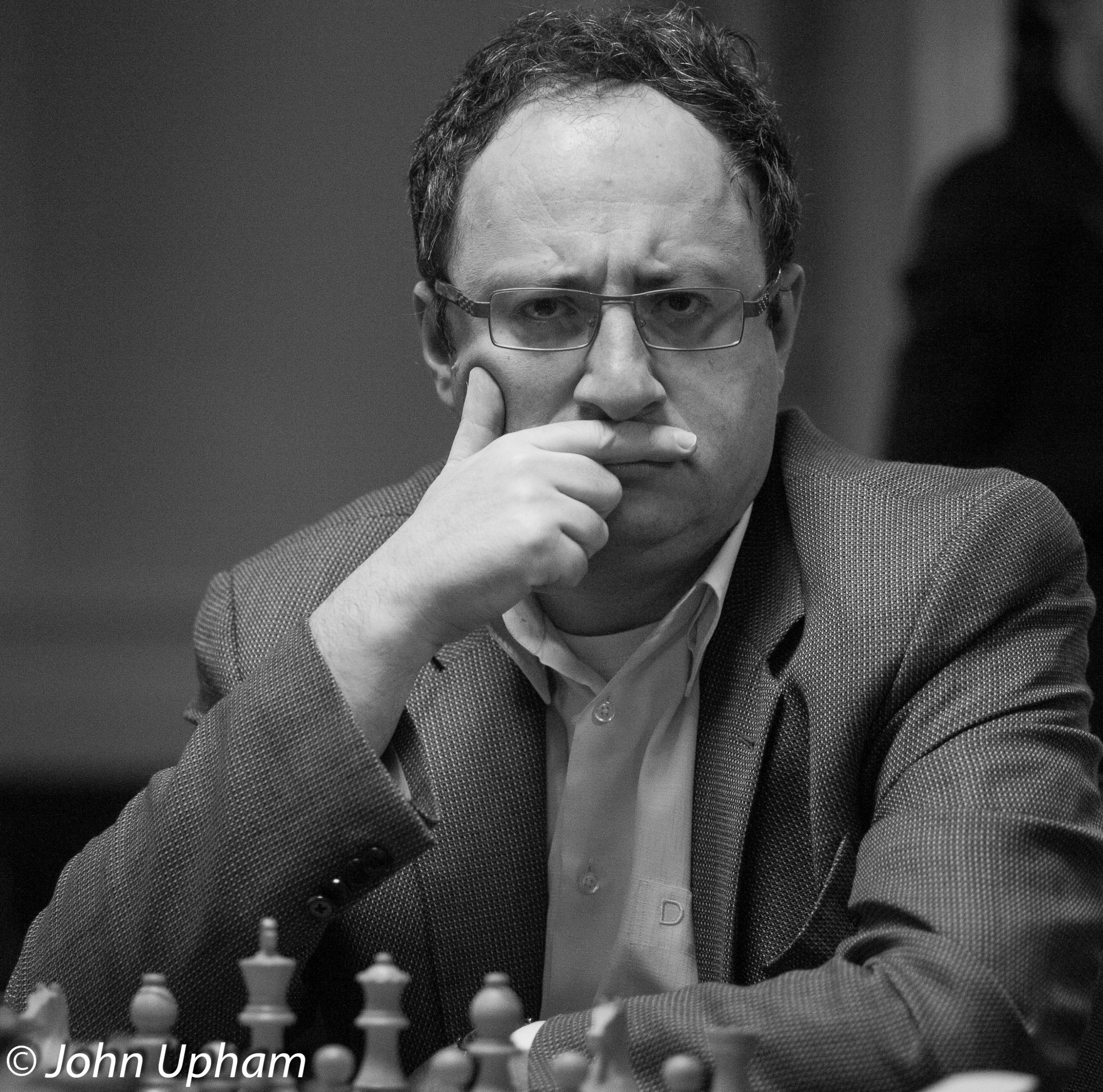
Reaction to previous volumes in the series:
In 2015 Positional Decision Making In Chess won the ECF Book of the Year award.
“The most interesting chess book I have read in the last quarter-century.” Mikhail Shereshevsky on Positional Decision Making in Chess.
This new Quality Chess publication Decision Making In Major Piece Endings uses high quality paper and the printing is clear. The book can easily be laid flat next to the board and does not require weights to prevent it from “self-closing” (a particular bugbear of ours !). Each diagram is clear and the instructional text is typeset in two column format, which, we find, enables the reader to maintain their place easily. Figurine algebraic notation is used throughout and the diagrams are placed adjacent to the relevant text and each major diagram has a “to move” indicator. Where a “to move” indicator is not present, it is obvious which colour is to move from the accompanying moves in a variation.
Each chapter is introduced with a contemporary photograph of a player or players or a tournament scene which launches each chapter in a engaging manner. This is followed by a Diagram Preview page which shows the critical analytical diagrams in the following chapter and invites the reader to practise their analysis and decision making! If you can work out most of the variations you are a world champion.
The introduction of this book makes it clear that this book is not an endgame primer or manual on basic major piece endgames as there are plenty of these theoretical works already in existence. Knowledge of very basic rook and pawn endgames such as the Lucena and Vancura positions is assumed. This book is “about decision making at the board and learning from your games – and those of others. In this book I will discuss topics that have arisen in some of the most interesting games without minor pieces during my career. We will encounter rook endings, queen endgames and games in what Romanovsky called the fourth phase, which is essentially later middlegames/early endings where only major pieces remain.”
The introduction also guides the reader on how to study the endgame: 1. knowledge of basic positions and their key variations and ideas must be known; 2. improving deep analytical skills; 3. development of intuition. This book concentrates on improving items 2 & 3 above. The author suggests how to best use the book by first analysing the endgames without a chess engine and/or tablebases to prevent lazy thinking by relying too heavily on engine assessments without understanding.
Despite the fact that the introduction claims that this book is not an endgame primer, there are a couple of excellent chapters on theoretical endgames. They are covered from a practical point of view and Gelfand draws out the key defensive ideas by concentrating on patterns and key positions. More on these chapters later. There are other basic endgame positions interspersed in other chapters which are reached from long variations but are nevertheless didactic as the theoretical endgames are shown in context within the whole endgame and the reader is clearly shown how these positions can be reached in practice.
Here is an critical position from the game Julian Hodgson – Boris Gelfand played at Groningen 1996. Both players misevaluated this ending as they both thought that black was easily winning. At the time, endgame theory agreed with them. Modern tablebases give this as a clear draw as black cannot hide his king from the checks with accurate defensive play from white.
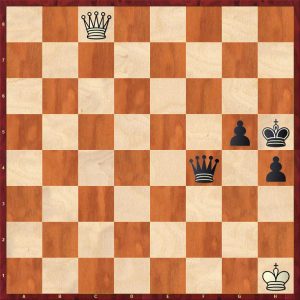
The game continued 86.Qe8+? The losing mistake. The black king escapes the checks by stepping in front of the pawns. 86.Qe6!, the most natural waiting move was still drawing. (86.Qd7! also draws). 86…Qf8 87. Qe2+ g4 88. Qe5+ Kh6 89. Qe6+ Kg5 90. Qe5+ Qf5 91.Qg7+ Kf4 92. Qc7+ Qe5 93. Qf7+ with a draw. 86… Kg4 87. Qe6+ Qf5 88.Qc4+ Kg3 89. Qc7+ Qf4 0-1
The author makes the point that if white had known that the endgame was a draw, and knew a few general ideas, he would have probably drawn the game. But when you think it is lost, psychologically it is impossible to hold it, particularly in an increment finish. A lot of the top players do not think in terms of lost or not: they concentrate on looking for ideas (to make life difficult for the opponent).
Chapter 1 – The Importance of Analysis
The title of the chapter is self explanatory and Gelfand stresses the need to study complicated endgames in depth and understand all the nuances. There are some superb examples of brilliant analysis. Here is one such position where Gelfand did not discover the right idea until 2018:
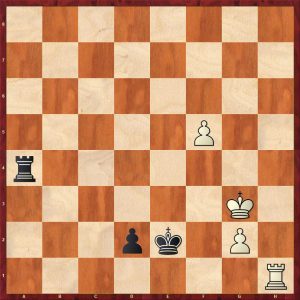
It is black to play, clearly 60…d1=Q 61. Rxd1 Kxd1 62. Kf3 is not good enough to win. Black to play can win with 60…Rc4!! 61. Rb1 Rc1 62. Rb2 Rf1!! cutting the king off from the e-file (62…Ke3? 63. Rxd2 Kxd2 64.Kf4 draws shouldering the black king) 63. Kg4 Ke3 64. Rxd2 Kxd2 65. Kg5 Ke3 wins as black’s king is now available to hunt the pawns down.
Chapter 2 Do Not Hurry
The “Do not hurry” concept is a key concept that I first encountered in Shereshevsky’s classic Endgame Strategy. In the position below, this principle can be demonstrated aptly.
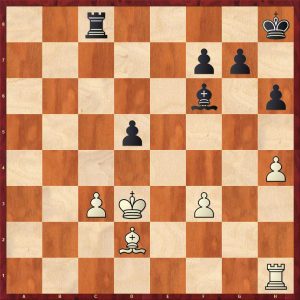
Converting this position is covered in detail with a key discussion on exchanges which is enlightening.
This rook ending could have occurred and black’s winning’s manoeuvre is instructive:
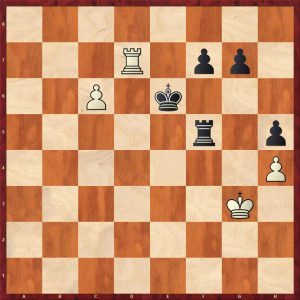
63…Rc5 64. Rc7 Rc3+ 65. Kf2 Rc4 66.Kg3 Now the black rook has been optimally placed, it is time to improve the king to the maximum, while keeping the best possible pawn structure, which is to keep the pawn on g7 and play …f6, so that White does not have Rc8 followed by c6-c7. If the pawn would be on g6 in that position, Rg8 would eventually come and save a draw. The best black would achieve is f- and h- pawns, but not in favourable circumstances. With the pawn on g7, …Rxc7 will always come as a response to Rg8 and black wins trivially. 66…Kf6 67.Kh3 Kg6 68.Kg3 f6 And black wins after either 69.Kh3 Kh6! followed by the advance of the g-pawn, or 69.Rc8 Kf5! and the advance of the king.
Chapter 3 – Three Surprisingly Complicated Rook Endgames
This is a variation from an interesting rook and pawn endgame Boris Gelfand – Lars Bo Hansen Wijk aan Zee 1993:

White wins with the instructive 64.Rc7!! preparing to cut black’s king off along the fifth rank 64…Rh1 65.Rc5! and if 65…Kd6 66.Rc6+, white can then simply queen the b pawn winning black’s rook whilst black’s king is unable to support his own pawn.
Here is another common type of position taken from a variation in the game Gelfand-Vladimir Kramnik Zurich 2017. White is clearly much better as his king supports his pawn and black’s king is not in the game. But how does white win?

The answer is simple once you see it. 48.Rc3!! Kf6 49. Rc2! and wins
Chapter 4 Two Defensive Methods in Rook Endings
This chapter is one of the theoretical chapters which covers rook and four against three all on one side and rook against three connected passed pawns. This section is well constructed with coverage of all the major positions and ideas in the 4 v 3 ending.
Some famous games are included which must be present in every treatise on rook endings. Here is one such ending from: Mikhail Botvinnik v Miguel Najdorf Moscow 1956:
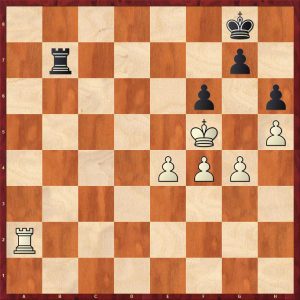
White is winning here because he can create a passed e-pawn and he has fixed the pawn structure with h5 leaving an entry point for the king on g6. The game continued 61…Kf7 62. Ra5 Rc7 63. Rd5 Ra7 64. e5 fxe5 65. fxe5 Ke7 66.e6 Ra4 67. g5! providing cover for the king 67…hxg5 68.Rd7+ Kf8 69.Rf7+ Kg8 70.Kg6 g4 71.h6! gxh6 72.e7 Ra8 73.Rf6 There is no defence to Rd6 and Rd8 with mate.
The celebrated endgame Capablanca-Yates Hastings 1930 is of course covered in great detail. The analysis of the famous position is covered in great depth showing the defender’s best defence which is tricky to crack. It is revealing to note that even the great Cuban World Champion let the win slip at one point. I suggest that the reader buys the book to study this superb analysis.
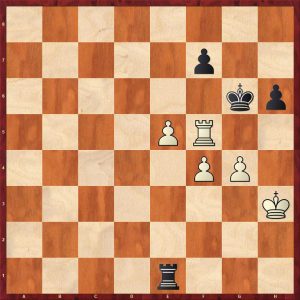
The position below is the celebrated game Piket-Kasparov Internet 2000 because Kasparov misplayed a drawn endgame so badly. We must not be too hard on the former World Champion as it was a rapid game and Kasparov is a superb endgame player.

The game continued: 42.Kh3 Re3 43.Kh4 Kg7?! Black does not have to let the white king into g5. 43…Kh6! 44.Rc7 Re2! 45h3

Now, 45…Rxe5! 46.Rxf7 Re4 47.g4 Rxf4! forces a quick draw.
The game continued: 44.Kg5 Re1? (The final mistake: black can hold with 44…Ra3 45.Rc7 Ra5 and white is stymied) 45.Rc7 Re2 46.Re7 Ra2 The following variation is the key to why white is winning: 46…Re1
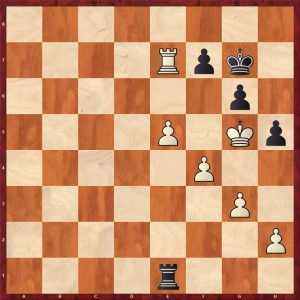
47.e6! Rxe6 48.Rxe6 fxe6 49.h3 Despite material equality, black is lost as he is in zugzwang. 49…Kf7 50.Kh6 Kf6 51.g4 h4 52.g5+ Kf5 53.Kg7 Kxf4 54.Kxg6 e5 55.Kf6 e4 56.g6 e3 57.g7 e2 58.g8=Q e1=Q 59.Qg4+ Ke3 60.Qe6+ exchanging queens and winning
In the game, black lost in a similar manner to Botvinnik-Najdorf:
47.f5! gxf5 48.e6 h4 49.Rxf7+ Kg8 50. Kf6 1-0
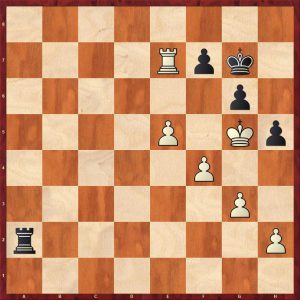
The final two positions in this chapter concern Rook v 3 connected passed pawns.
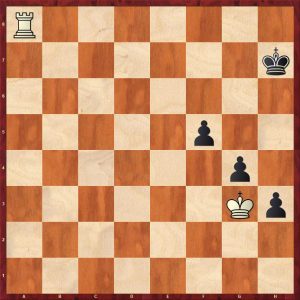
White to move wins with 1.Rf8, black to move draws only with 1…Kg7! preventing the rook from moving behind the base of the chain.
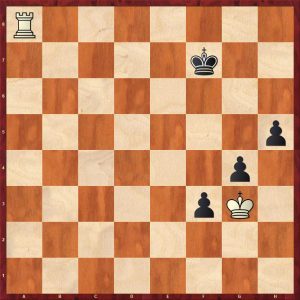
Similarly in the mirror position, white to move wins with 1.Rh8, black to move draws with 1…Kg7!
The core of the book (chapters 5 to 8) is a series of four chapters deeply analysing three rook and pawn endgames of Gelfand’s against world class opposition. The games are shown in their entirety which is the modern way to study endgames in relation to the opening and middlegame.

This position from a variation in the game Gelfand-Kasimdzhanov from Baku 2014 caught my eye. Black to play – what should he do? 59…Kf5!! The obvious move is to push the pawns with 59…g4. Let’s see what happens: 60.Rc6! f5 61.Rxa6 Kg5 62.Rb6 h3 63.Kg3 f4+ 64.Kh2 Kf4 65.Rh6+ Kg5
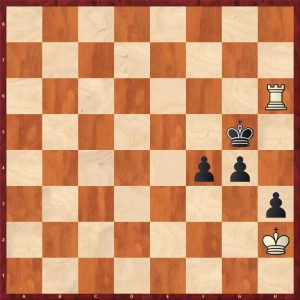
66.Rh8! Kf5 67. Rg8! Black is in zugzwang and loses all the pawns.
60.Rc6 a5 61. Rc5+ Kg6 62.Rxa5 f5 and black prevents the rook from reaching f8. This is obvious when one has knowledge of the basic endgame rook v 3 connected pawns shown above! The author has shown an excellent example of knowing your basics being applied to a real live game.
Chapter 9 Queen Endings with a g- or h- pawn
This is one of the reviewer’s favourite chapters as it combines endgame theory with practical examples showing that even strong GMs do not know how to defend these endings correctly. Even when players know where to put their defending king, choosing the correct check to draw is not obvious!
Here is a position from Gelfand-Jobava from Dortmund 2006.
The reviewer loves this endgame.
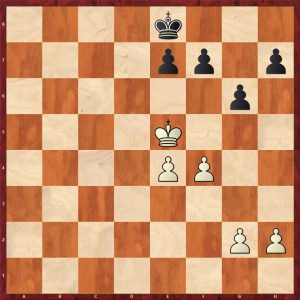
This king and pawn ending is clearly drawn but white is pressing with a more advanced king. White played 50.h4 setting a subtle trap. 50…h5?? losing, incredible to believe but it is true. 50…Kd7 draws, for example 51.g4 f6+ 52.Kd5 e6+ 53.Kc5 h6 54. e5 fxe5 55.fxe5 Kc7 seizing the opposition and drawing 51.f5! f6+ 52.Ke6 gxf5
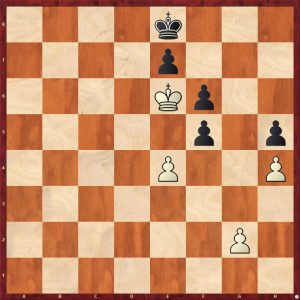
Now white played 53. e5!! which had been completed missed by black (automatic recapture syndrome) fxe5 54.Kxe5 Kd7 55.Kxf5 Kd6 56.Kg5 Ke5 57.Kxh5 Kf4

Now white can enter a winning queen endgame with 58.Kg6!
White did not play the endgame perfectly, and after many adventures this position was reached at move 87. Black is drawing here if he places his king in the drawing zone which is the far corner diagonally opposite where the g pawn is hoping to queen i.e. a1.
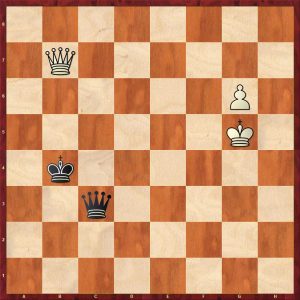
87… Ka5? was played which loses. I am surprised that a strong GM moved his king the wrong way. 87…Ka3 draws but the draw is not simple. 88.g7 and now black can draw with an accurate sequence of moves that are not obvious. 87… Qe5+ (the obvious 87… Qg3+ loses in 41 moves) 89.Kg6 Qe6+ 90.Kh7 reaching the drawn position below.
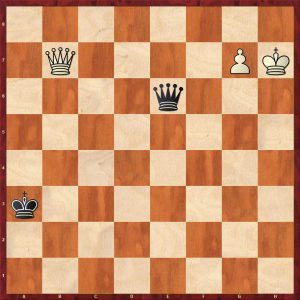
90…Qf5+ 91.Kg8 Qf4! (only move) draws, 90…Qh3+ 91.Kg8 Qf5! (91…Qe6+ loses) also draws
The game continued 88.g7 Qe5+ 89.Kg6 Qe6+ 90.Kh7 Qf5+ 91.Kg8 Ka4 92. Qh1 Qc8+ 93. Kh7 Qf5+ 94. Kh8 Qe5 reaching the position below:
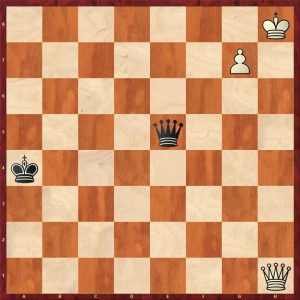
Now 95.Qh3! wins cutting off he black king from the drawing zone. Gelfand won the game easily after another 18 moves. The best defence involves white winning by transitioning through the two diagrams below exploiting black’s king position to misplace the black queen. Absolutely fascinating stuff.
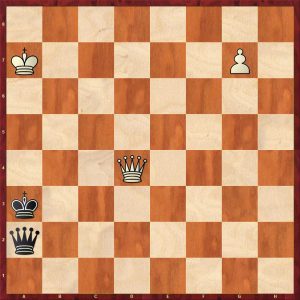

Chapter 10 – Multiple Queens
This section is entertaining with some really exciting and amusing positions. Here is one such position:
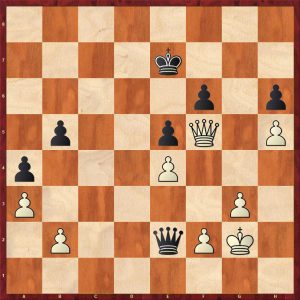
This looks like a fairly standard queen and pawn ending. Black is a pawn down but is to play and played the obvious capture 55…Qxb2? which is simply too slow. 55…b4! was the drawing move. White has two tries: 56.axb4 is the only real winning attempt but falls short: 56…Qxb2 57. Qh7+ Ke6 58. Qxh6 a3 59. Qg6 a2 60.h6 a1=Q 61.h7 Qe2! forcing white to take a perpetual. Or 56. Qh7+ Ke6 57. Qxh6 Qxe4+ 58. Kh2 Qe2 with sufficient counterplay against the white king to draw. The game continued: 56.Qh7+ Ke6 57. Qxh6 b4 58. Qg6 bxa3 59. h6 a2 60. h7 a1=Q reaching the position below.
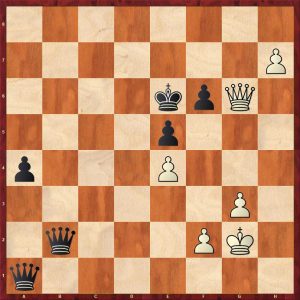
61. Qf5+? Driving the king towards safety: 61.h8=Q wins instantly, with a quick mate.) Kd6 62. h8=Q Kc5! 63. Qf8+ Kc4 64. Qe6+ Kd3 65. Qfxf6 Qd4 66.Qf3+ Kd2 67. Qh6+ Kc2 68.Qc6+ (the computer prefers 68.Qe2+ Kc3 69.Qc6+ Kb4 70. Qb7+ Ka3 71. Qe7+ Kb3 72. Qf7+ Kb4 73.g4 and white is winning) Kb1 69. g4 Qab2 70.g5 a3 71. g6 a2 72. g7 a1=Q 73. g8=Q Qaa3 74. Qgg3 ? (74. Qcf6 keeps the advantage) reaching this position:

This is the beautiful but sad moment of the game. Black played 74…Qxf3+? and went on to lose quickly. 74…Qdxf2+!! draws by sacrificing all three queens for stalemate, for example 75. Qfxf2 Qxg3+ 76. Kxg3 Qc3+ 77. Qxc3 stalemate. Fantastic! Who says there is no humour in chess ?
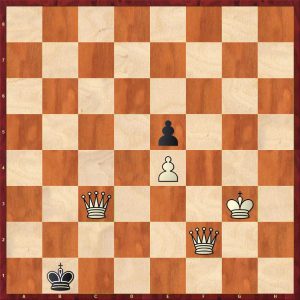
Chapter 11 – Full Circle
This chapter covers the famous game Botvinnik-Minev Amsterdam 1954 which goes into a celebrated Q + g pawn v Q ending which Botvinnik won from a drawn position. As Boris Gelfand points out, once we know that an article written by Paul Keres in the 1947-1949 Soviet Yearbook recommended that black place the king on a4, black’s moves become completely understandable.
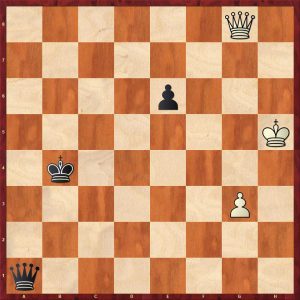
56.Qg4+ Ka5? This is still a draw but modern knowledge recommends Ka3 heading towards the opposite corner. 57.Qxe6 Qh8+ 58.Kg6 Qc3 59.g4 Qd2 60.g5 Qd4? Centralisation looks good, but in fact loses. 60…Ka4! was best, several other moves also draw.

Now 61. Qf5+? allowing black to draw. 61. Kh7! Qh4+ 62.Qh6 followed by g6, the black king is too far from the a1 corner 61…Ka4 62. Kh5 Qh8+ 63. Kg4 Qh1? The final mistake, after this Botvinnik wins with no slip-ups. Buy the book to find out how. 63…Ka3! was correct.
Chapter 12 – Conversion in the 4th Phase
This chapter covers a complex Q and double rook late middlegame which reveals the complexities of such positions. The game clearly shows that a sustained initiative is so potent.
This is a critical position from the game Gelfand-Edouard. Black is under the cosh but can defend with 35…Qxe5! 36. Qxa7 Rg6! 35.Qb7 Rxg3+! 36.fxg3 Qe3+! 37. Kh2 Qh6+ with a perpetual check.
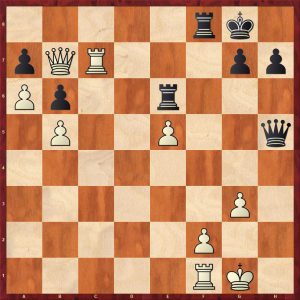
The penultimate chapter is a series of studies which are elegant and instructive. There is a particularly beautiful study by Darko Hlebec. Buy the book to appreciate the beauty of chess.
The final chapter is a series of rook exercises which are extremely didactic. If you can solve all of these, you are a World Champion.
I heartily recommend this superb book on major piece endgames which is a labour of love and hard work. It combines practical examples with coverage of basic endgame positions.
FM Richard Webb, Chineham, Hampshire, 16th November 2020

- Paperback : 320 pages
- Publisher:Quality Chess UK LLP (28 April 2021)
- Language: English
- ISBN-10: 1784831395
- ISBN-13: 978-1784831394
- Product Dimensions: 17.2 x 1.55 x 24.43 cm
Official web site of Quality Chess


